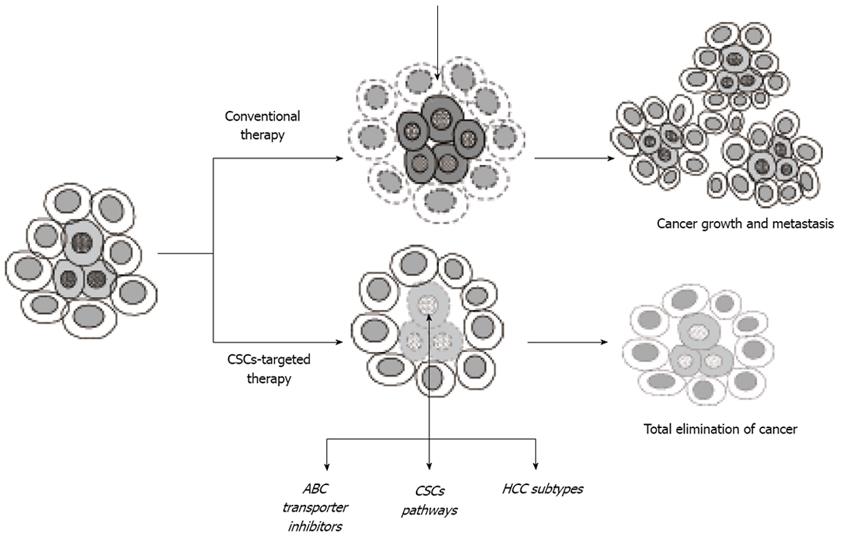Copyright
©2010 Baishideng.
World J Hepatol. Mar 27, 2010; 2(3): 114-126
Published online Mar 27, 2010. doi: 10.4254/wjh.v2.i3.114
Published online Mar 27, 2010. doi: 10.4254/wjh.v2.i3.114
Figure 1 The liver cancer initiation hypothesis based on CSCs theory.
The hepatic stem cells (SC) and oval progenitor (OC) cells have specific capacities to self renew and differentiate into multiple hepatic lineages. Mutations in SC and/or OC may modify the cells genetic property and switch the normal SC into CSCs leading to tumor initiation.
Figure 2 The CSCs-targeted therapy strategy.
Conventional therapies affecting mainly the differentiated cells might not be sufficient to eradicate total tumor. In the CSCs-targeted therapy, chemotherapeutic agents is specially designed to target the CSCs. This strategy may primary block the main source and consistently inhibit the growth of tumor. Some factors such as CSCs pathways, tumor subtypes and drugs transporters inhibitions should be considered to increase the efficiency and safety of the treatment.
Figure 3 A collaborative approach to target the CSCs.
The hepatic CSCs identifications and their functional significances, including multidrugs resistance behavior and aberrant signaling pathways should be clearly identified. Together with CSCs markers, clinical aspects such as drug delivery system, single or combination therapy, drug dose and toxicity will support the potential of therapy. Both biological and clinical considerations will be potent means to improve the safety and efficiency of CSCs-targeted therapy.
- Citation: Sukowati CH, Rosso N, Crocè LS, Tiribelli C. Hepatic cancer stem cells and drug resistance: Relevance in targeted therapies for hepatocellular carcinoma. World J Hepatol 2010; 2(3): 114-126
- URL: https://www.wjgnet.com/1948-5182/full/v2/i3/114.htm
- DOI: https://dx.doi.org/10.4254/wjh.v2.i3.114















